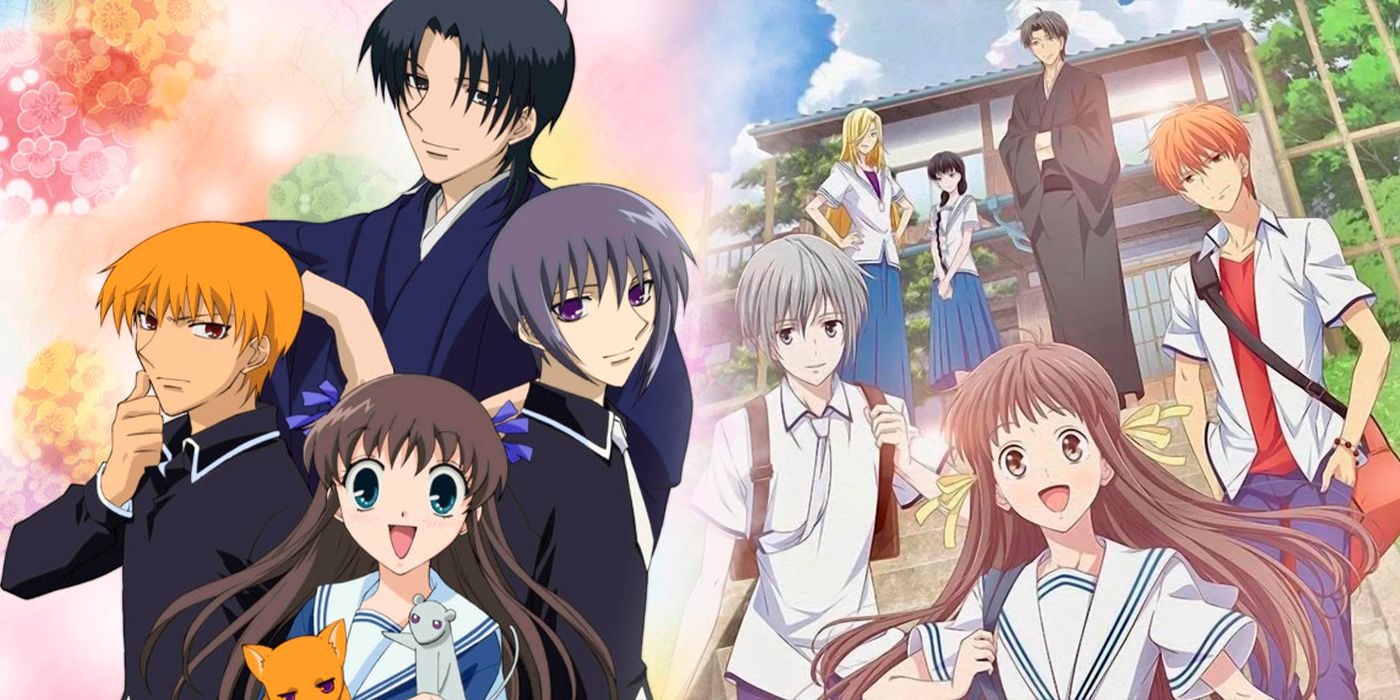The original 26-episode anime, Fruits Basket by Studio Deen, premiered on July 5, 2001. The anime follows the story of Natsuki Takaya’s 23-volume manga of the same name. The director, Akitaro Daichi, and Takaya came to many disagreements when adapting the anime. Takaya came to dislike this version of her story, and it took 18 years before a different retelling was given a chance.
In 2018, TMS Entertainment was given approval by Natsuki Takaya to adapt her story. With many accommodations to Takaya’s requests, the reboot was given the chance to cover every chapter. This resulted in a 63-episode anime premiering in 2019. While both the 2001 and the 2019 versions are based on Takaya’s manga, there are many differences between the two. By comparing the premiere episodes, viewers can see what was changed to meet Takaya’s expectations.
Artwork, Editing and Vocals All Play a Major Role in the Storytelling
One key difference that’s noticeable from the very first second of each anime is a change in the animation style. While there is an attempt to match Natsuki Takaya’s art style and blend in with the popular animation at the time, there’s something about the choice in the 2001 version that doesn’t quite work. Takaya’s style works well on a page, but when translated into animation, the story doesn’t have the same effect. The coloring choices — which were an issue with Takaya — lack dimension that fails to bring watchers into the magical world. What makes part of Fruits Basket so incredible is the story’s connection to life and nature. By choosing bland palettes, the 2001 version is unable to highlight this importance.
Along with the animation style, another key visual point that shows a drastic change is the editing style. While some editing was simply following a popular trend in the anime scene of the early 2000s, some of it was quite odd. One choice that’s recognizable is the usage of a television static filter during some scenes. The first appearance of this is when a character with psychic abilities, Saki Hanajima, threatens to use her powers on a couple of girls bullying her friend, Tohru Honda. At this time, the usage of the filter is an understandable choice. However, later on, this filter is used multiple times in a conversation where Hanajima isn’t present or even mentioned. There is an abundance of unnecessary transitions and filters that are used throughout the episode. When compared to the first episode of the reboot, the amount seems almost ridiculous.
While visuals were a key part of meeting Natsuki Takaya’s desires, another issue was addressed by TMS Entertainment. Takaya was disappointed in the selection of cast and crew back in 2001, especially with Akitaro Daichi as the director. The reboot was already in more trustworthy hands when Yoshihide Ibata was hired as the director, and the entire Japanese cast was scrapped for new actors. However, a lot of the English cast remained the same. The two premiere episodes, even when compared in English, show the drastic improvements of each actor and how their understanding of their respective roles has changed over the years.
Music Can Be Just as Important to the Storytelling as the Visuals
Another change that was made between the two was the addition of a score throughout the reboot’s first episode. When watching the original and reboot’s premieres back to back, the 2001 version feels eerily silent. Some scenes from the 2019 series follow the 2001 script word for word, but due to the inclusion of music, the reboot carries plenty more impact. The reboot is able to tie storylines together with the usage of a recurring score that’s established in the first episode. Without this chance, the original anime is unable to connect scenes through the subconscious of its viewers.
The 2019 anime learned what worked with the original anime and what didn’t. The best decision that TMS Entertainment made was following Natsuki Takaya’s requests when it came to adapting her story for the screen. The original Fruits Basket anime has a special place in the hearts of fans, but the reboot was able to execute the story properly starting from the very first episode.
